Blog
Nine Days Of Namibian Dirt
Mats Fredrix is the Content Creator on the 2023 Tour d’Afrique from Nairobi to Cape Town. He sends this report from the desert in Namibia.
Gravelling through Namibia from Windhoek to the Great Orange River produced some stunning views of cyclists battling some of the toughest stretches of dirt in the world, just a week from their trans-continental finish line in Cape Town.
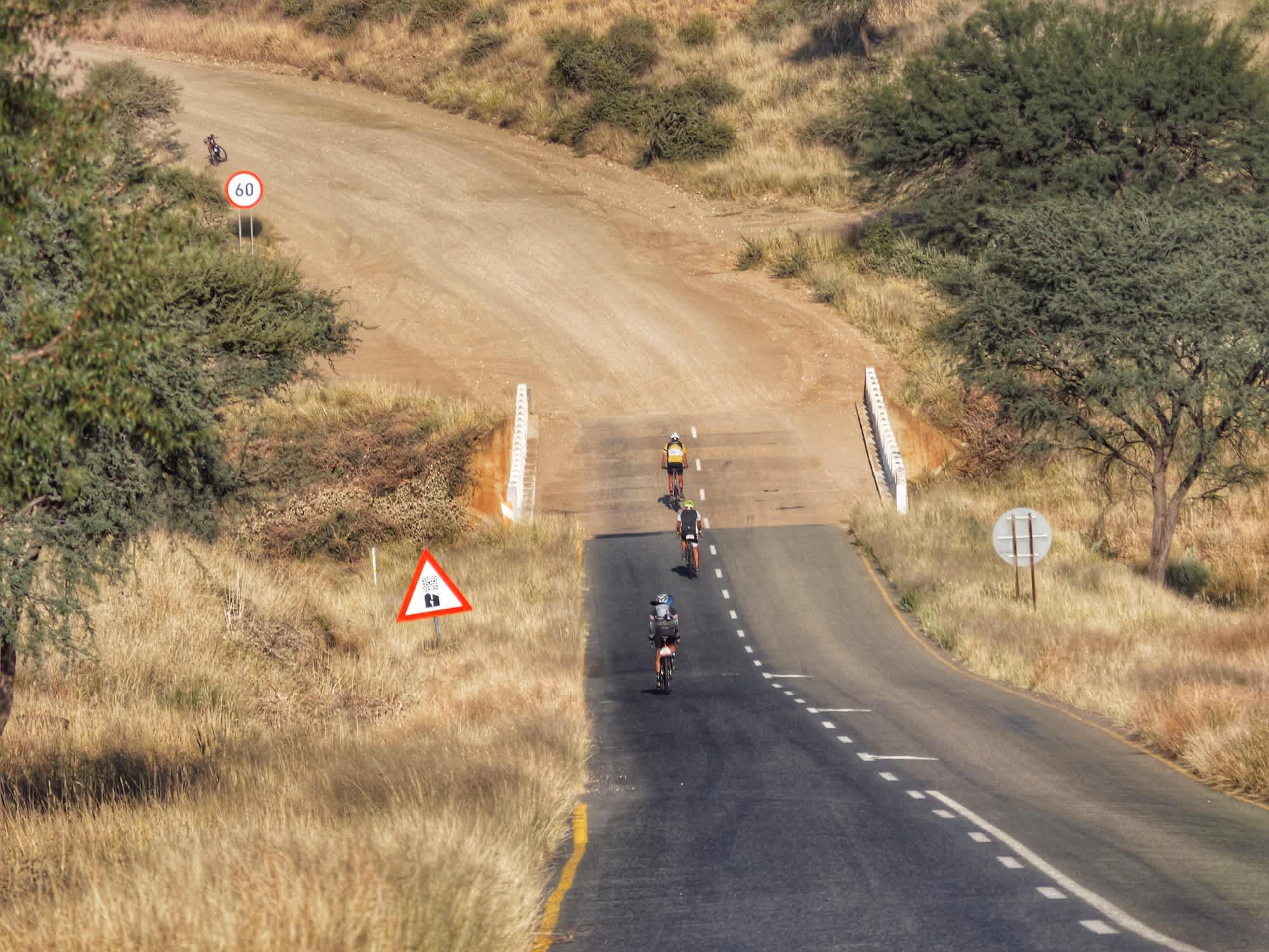
And so it begins…
Canadian rider Greg Duncan stated, “I had never done that much gravel in my life, I’m fairly new to biking long distances, and when I looked at the distances I thought, what a challenge this is going to be” while fellow cyclist Peggy Schrieber added, “Those first days were rough. Hot, deep sand, washboards… It felt a little bit like it was never going to end. Those were probably for me the hardest days of the whole tour.” Bernd Sydow from Germany noted that, “Some of those days were so hard, people would stop riding a bicycle after doing a stretch like that. But it was also my favourite section of the whole tour haha!” and American rider Jane Clark admitted, “I had been dreading it, and then after the first day, which was really tough, our ATD Britney had a little seminar. She answered a lot of my questions and offered a lot of tips, it really helped.”
By the time the Tour d’Afrique arrived in Windhoek the phrase ‘the final stretch’ was on everyone’s lips, though the actual finish line was still painfully far away. In the TDA world distances are counted in rest days and Cape Town was now just two rest days away. The actual fifteen riding days that separated them from the finish line, no one really mentioned. Botswana was in the rear view mirror at this point and the mere sight of hills at this stage was pure joy to every rider. No more long, never ending straight tar roads through the bush. Namibia was coming, and it promised to be very different.
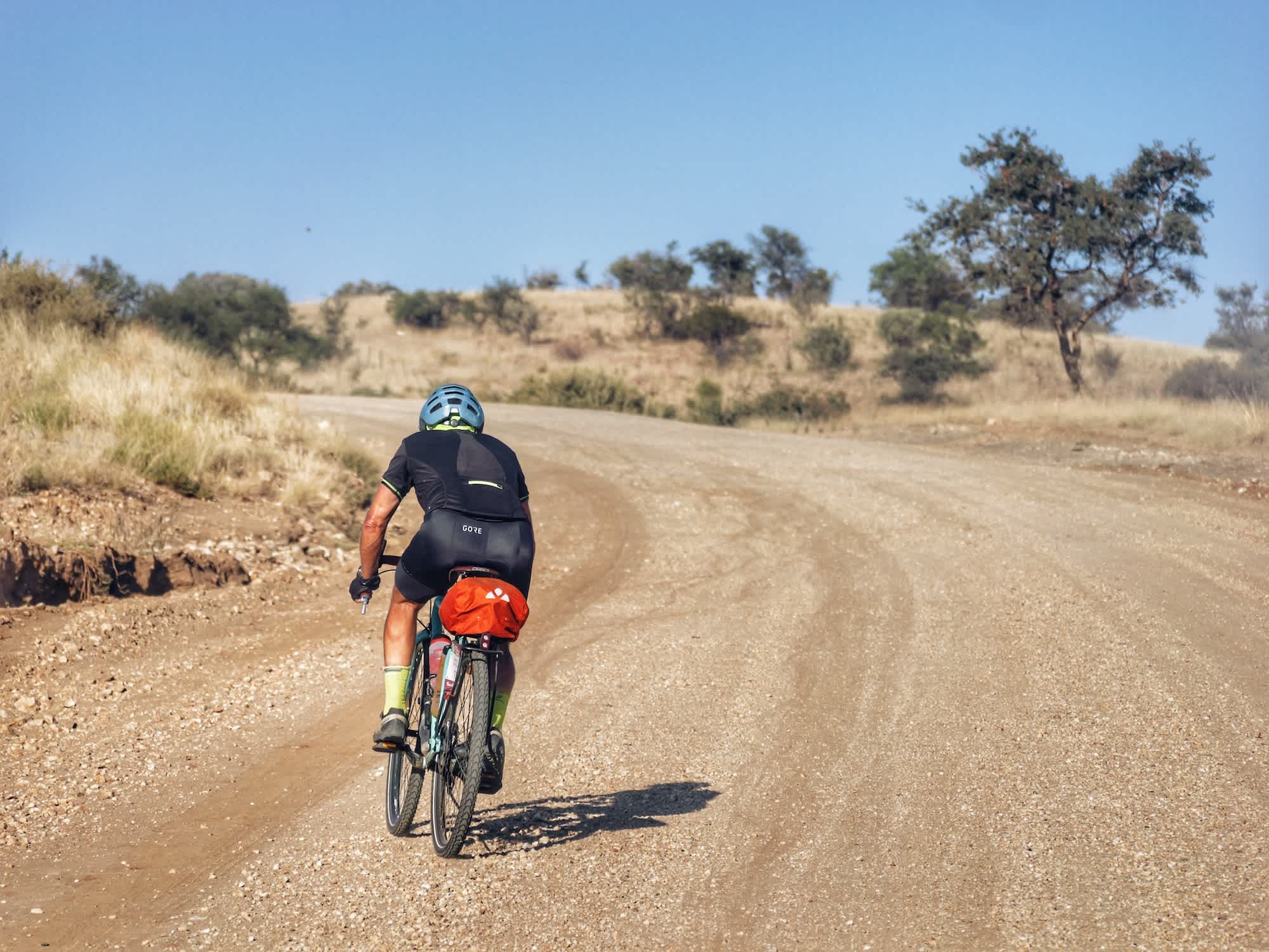
That change, as it tends to do on TDA tours, happened gradually. It started during our bus day into the Namibian capital of Windhoek. Surrounded by hills, it was a marker of change, as it is here that a new section of the tour began – Dunes & Atlantic. Urban Camp in Windhoek was the base of operations for that final segment. It’s where we prepared for what is to come: nine days of dirt. Just a tad over 1000 km, all the way from Windhoek to the border of South Africa and the Felix Unite campsite next to the Great Orange River.
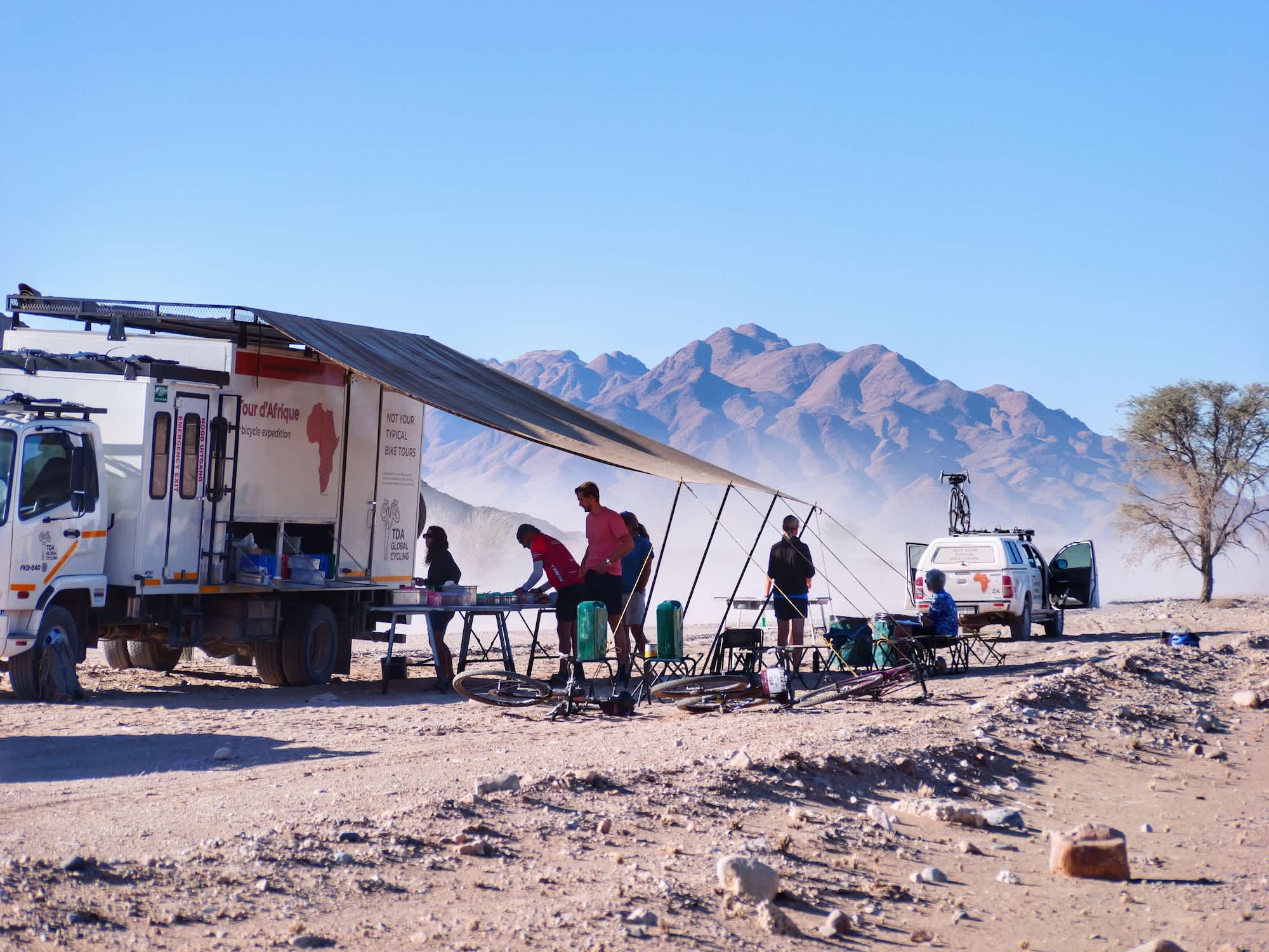
You could tell something big is in the offing by the hustle and bustle surrounding the bike clinic on the rest day. Tires everywhere. Different types of shock absorbing mechanisms being tested and scrutinized: from suspension forks to handlebar and seat post suspension. When it comes to absorbing the shocks, most still stuck with lowering the tire pressure significantly as their primary tactic to tackle the dirt. All sorts of advice on how best to handle Namibia’s infamous gravel roads was constantly being offered and received. The mechanics were working overtime. “We first started talking about the Namibia stretch on the dirt in Tanzania,” said rider Peggy, “At that point we started to think ahead of what Namibia would be like, and started comparing it with what we had heard about it.”
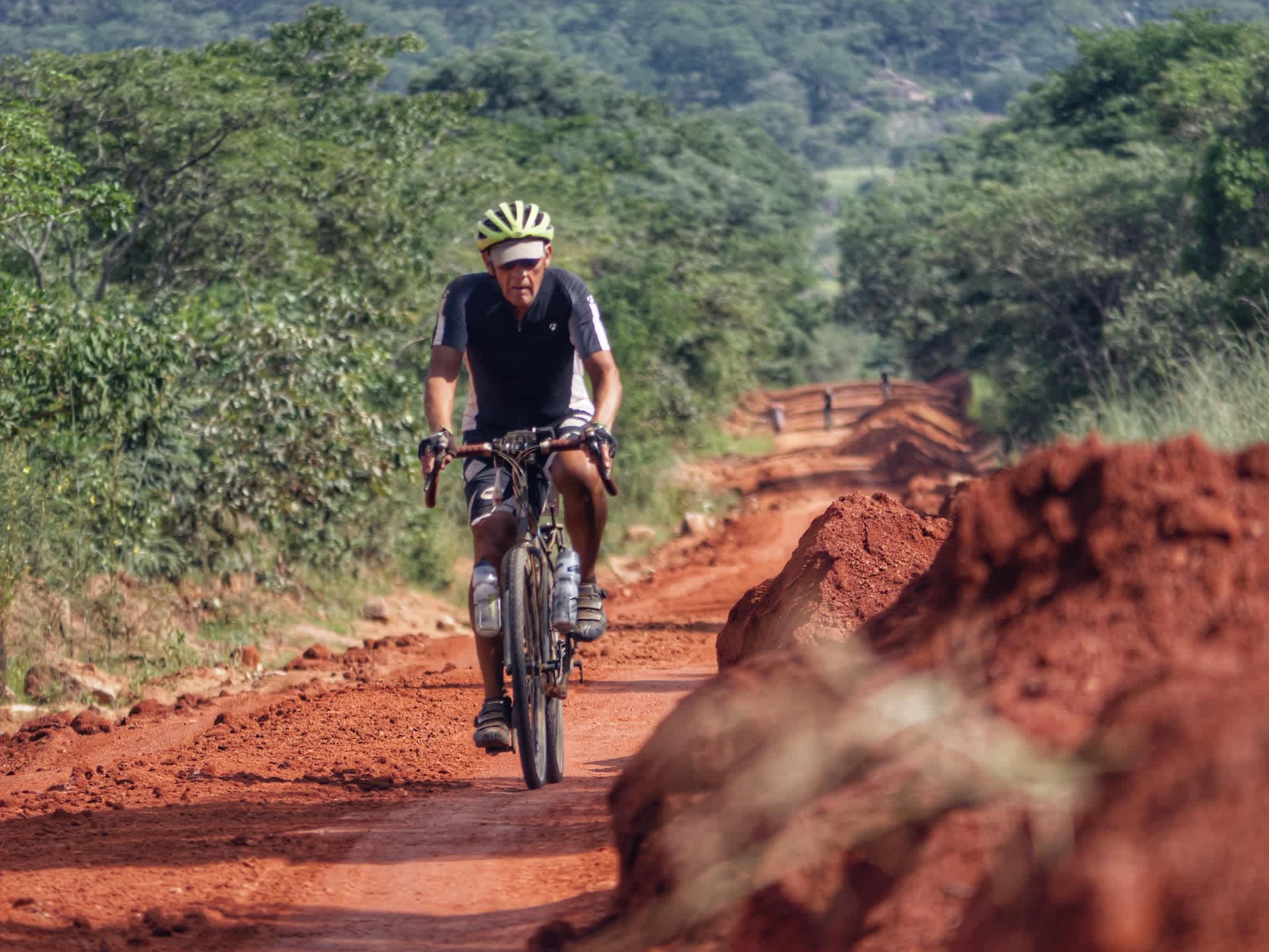
Dirt in Tanzania
The Namibia dirt road stretch is arguably the most highly anticipated section of the whole tour and possibly the most challenging one. It’s no small feat leading the whole TDA caravan close to, and even at times through, the oldest desert in the world: the Namib Desert. Hydrating and navigating correctly was at the top of the list in many rider meetings, but in the desert it really can be a matter of life and death. Bike Mechanic and TDA veteran, Doug Percival, put that message out there well ahead of time, “It’s no joke out there, I’ve really seen people crack!” His warning worked. Although it caused a bit of a stir, and no doubt some unease, nobody was going to underestimate the desert.
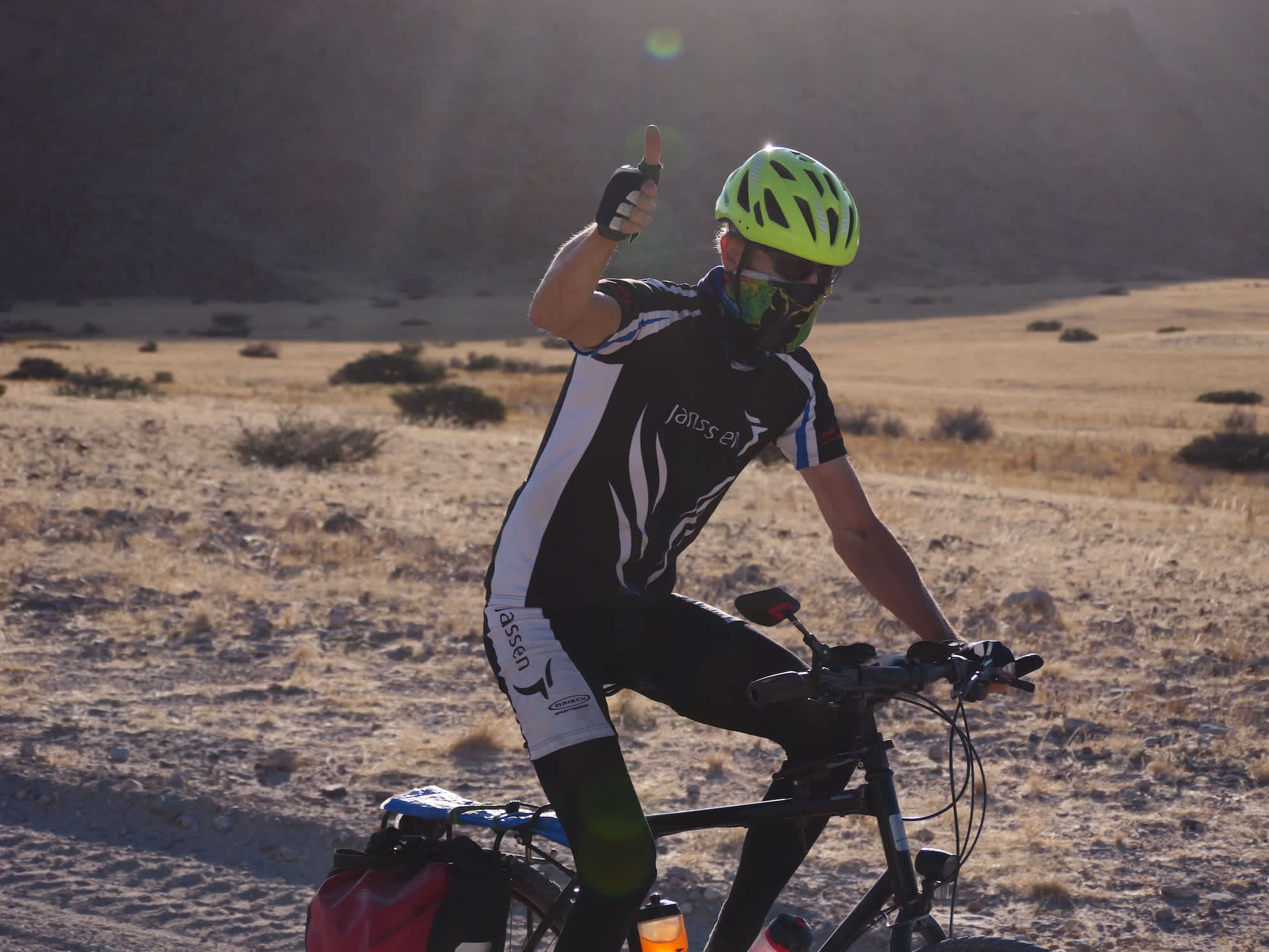
Tour Medic, Sam Covins, noted that it is a totally different style of riding, creating a lot of new challengers for the medical approach to the section. “Rough road surfaces can be hazardous, and highly increase the risks of falls. Dust clouds from passing vehicles can also irritate the lungs resulting in coughs, and breathing difficulties.” He advised the use of face coverings to avoid the excessive inhalation of particles, a tip a lot of the riders followed.
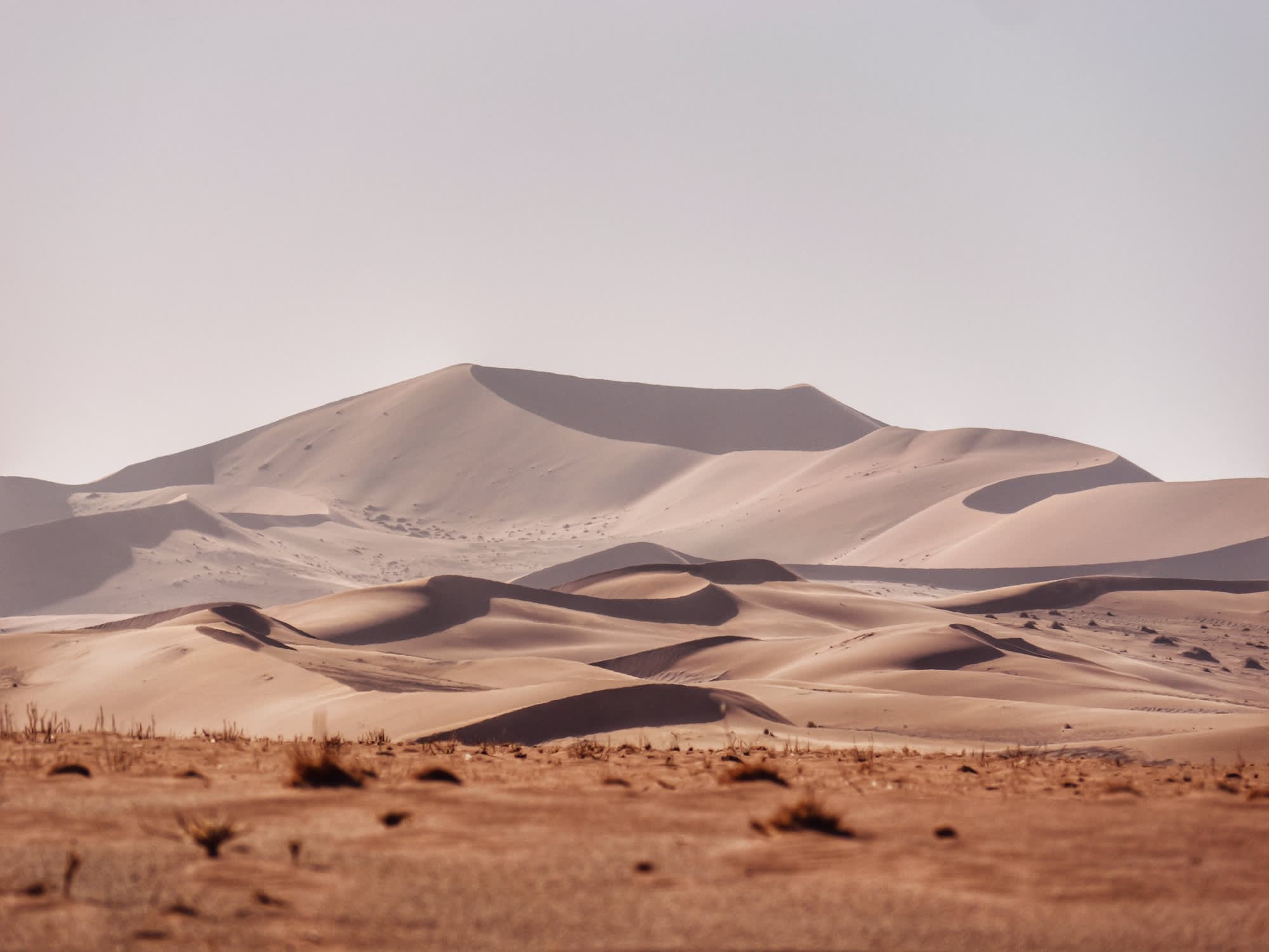
So, why do it at all? It’s a valid question and it does get asked quite regularly. Why ride a road that almost no cyclist ever rides? Well, TDA is a bicycle expedition, and the Namibian dirt stretch is exactly one of those far-out factors that makes the Tour d’Afrique the challenge it is. It is also one of the top reasons for a lot of riders to sign up for the tour, not just because they love riding the gravel but also because it offers up some of the most stunning scenery of the whole trip. “In Egypt and Sudan there was so much plastic, and so many people,” said one rider. “To me it didn’t really feel like a desert. So I was really looking forward to Namibia. And I got exactly what I expected. But I had to pay a price. Riding those gravel roads!” Those gravel roads are also the one and only way to get to one of the tour’s most famous attractions: The incredible sand dunes at Sossusvlei and the DeadVlei Valley.
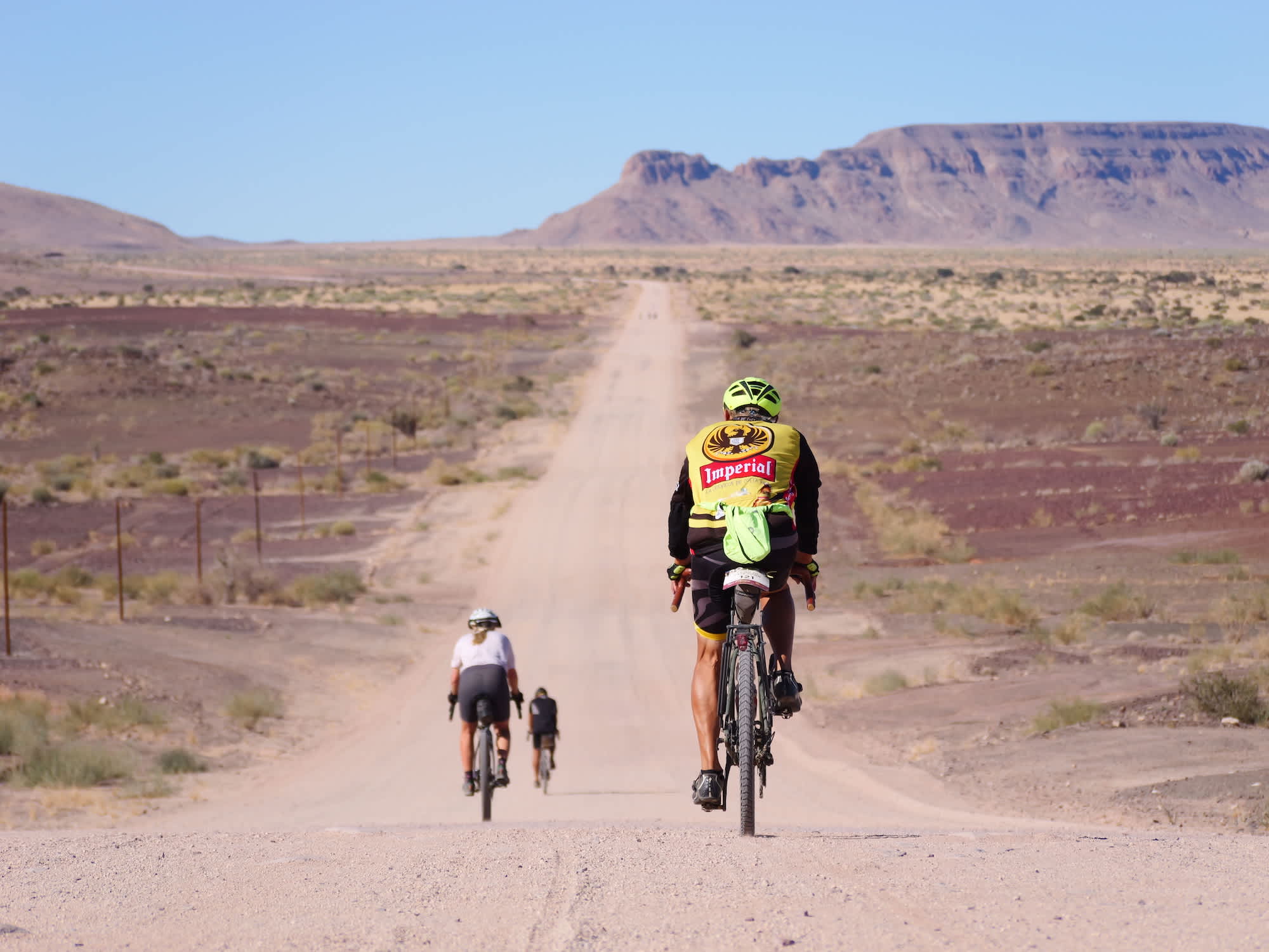
Riding on dirt roads. You either love it or hate it. It depends on who you ask. Assistant Tour Director, Britney Charme, has many years of experience guiding gravel bike tours in the US and says, “Namibian roads are what gravel dreams are made of. This type of riding appeals to those who enjoy grit and ruggedness in their cycling. It is for those who don’t mind the ever changing variables of desert dirt roads. In a single kilometre, the rider may experience deep sand pits, chunky off-camber terrain and corrugation. On the next kilometre the rider will be rewarded with champagne gravel, that smooth and freshly graded surface that allows the bike to float over the road. It is the hardest style of riding we do on this tour. Gravel road sections have a tendency to elicit strong opinions amongst the riders. It is a matter of personal riding style. Some folks prefer the predictability of paved roads. They appreciate the smooth flow of cruising along on a tarmac road. The riders can, and do, debate the qualities and superiority of gravel vs. tarmac all day long but one thing they agree on is that these gravel sections contribute to the character of the Tour d’Afrique, an extra dose of spice and the adventure that we are all here looking for.”
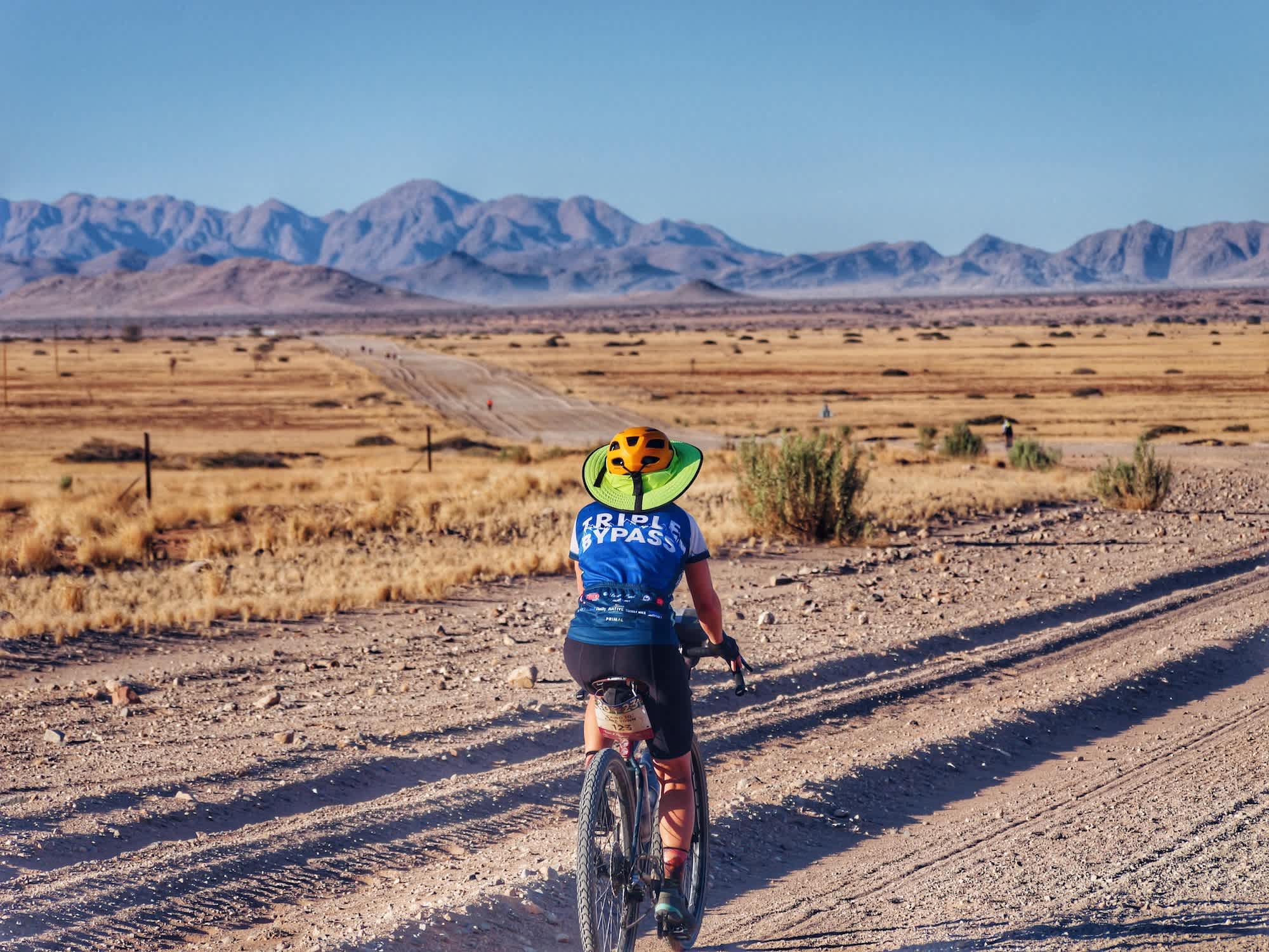
“I wanted to do as much as possible of the section,” said Jane Clark, “while also figuring out how to deal with the heat and my body tiring. I decided to do half days now and then, and that was a great decision, as I was actually able to enjoy myself out there and get a sense of accomplishment.” This was an approach a lot of riders took to heart. “I was very grateful to have the TDA set-up,” said Bernd, “I decided to just ride half-days, and this changed everything for me. I could still enjoy the desert, ride every day, but not have to ride every single meter. That made it so easy, and it made it so enjoyable.”
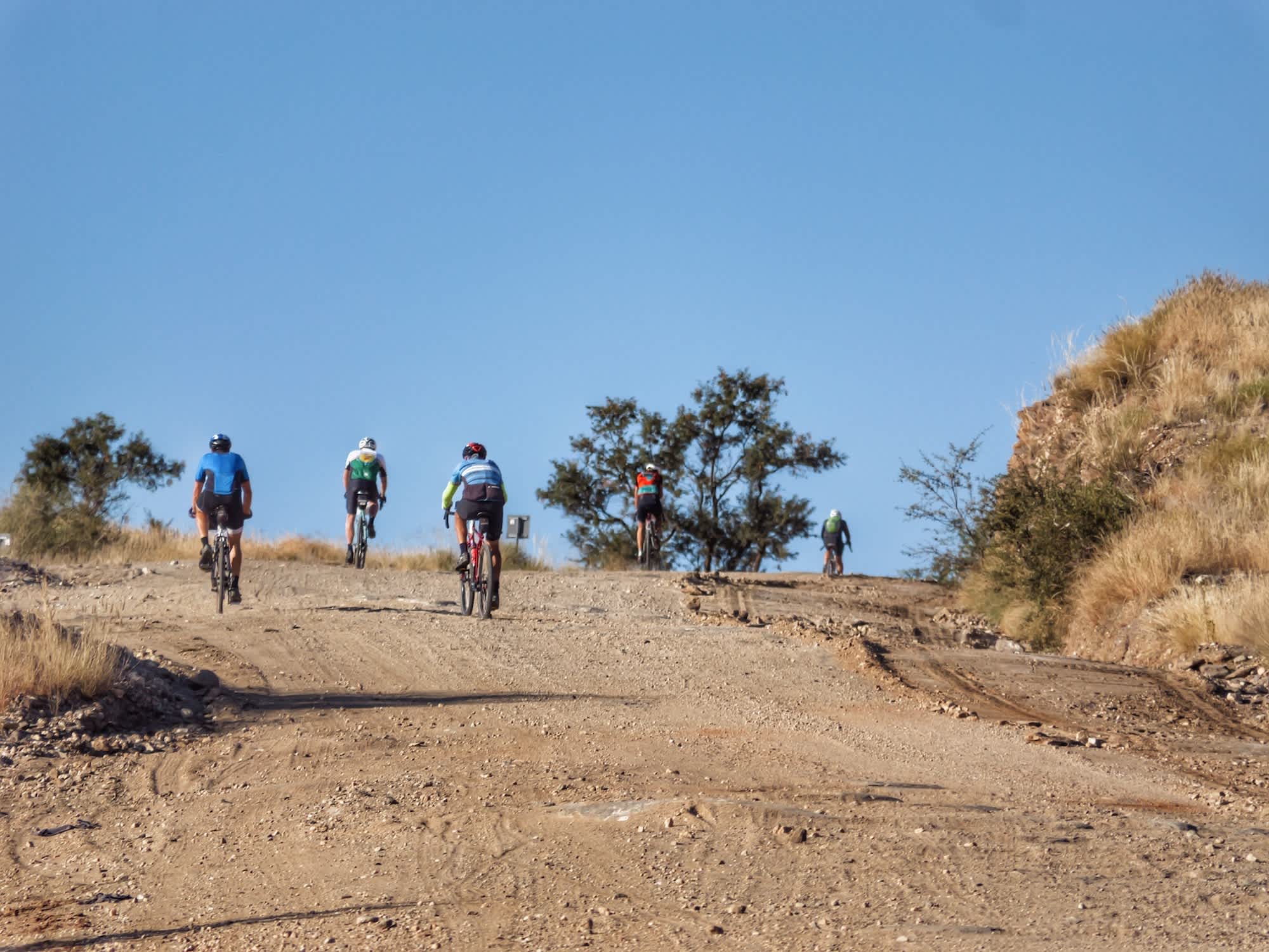
“I got a lot of tips from fellow riders, in Tanzania already,” admitted American Peggy Schrieber, “keep pedalling, high cadence, just keep going! That kind of stuff.” “My confidence only rose over time,” added Jane, “Finding a line is super important, and I got so much better at that.” Peggy added, “There were moments when I would see people ahead of me having to get off the bike, and I found a different line and I got all the way through it, and I was like: yeah! It was a confidence builder!” And then there was the reward. Those rocky mountains constantly in the background, the desolation…“The night skies were incredible,” said Peggy, “horizon to horizon, more stars than you could possibly imagine.” “I’m a stopper,” said Greg, “and the landscape was just phenomenal. It’s just so quiet. There’s no sound at all. I’ve never experienced anything like that in my life”
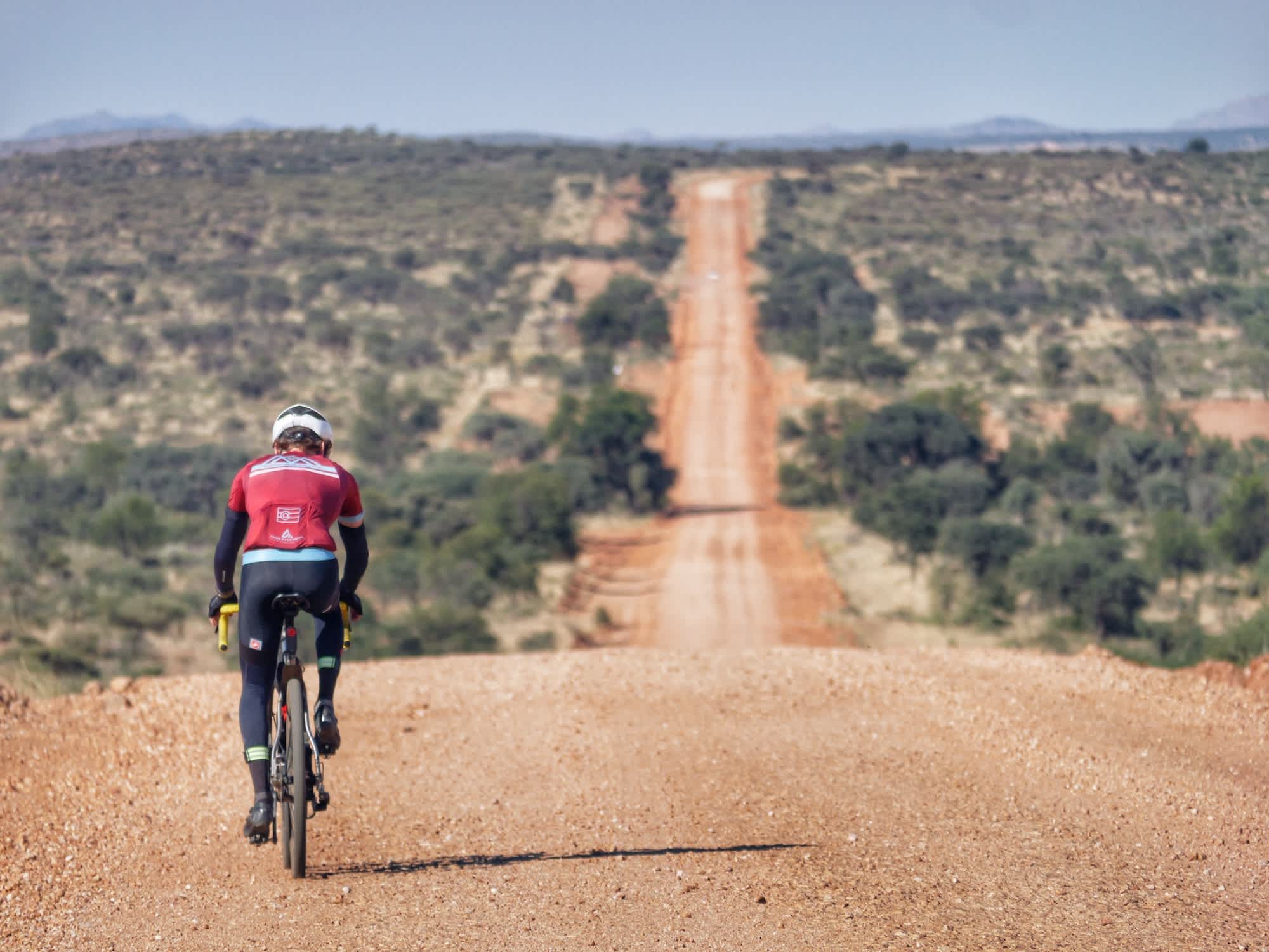
Dutch cyclist Bas summed it up pretty well while enjoying a dip in the swimming pool at the Felix Unite camp after a gruelling final day in Namibia fighting some of the strongest headwinds of the whole tour. “This was so tough, but it’s like we’ve been training for it the whole tour. Mechanically, physically and mentally we really needed every ounce of our courage and experience, but we did it! I think the tour is built really well,” added Peggy, “By the time we got to this section, we are tired, yes, but we also have the skills and the endurance to get through it. In the end, those six days were done in a flash!”
RELATED
TOUR

Tour d'Afrique
Our original trans-continental journey and flagship expedition crosses Africa from north to south, covering 10 countries in all. Beginning at the...
 REGISTER NOW
REGISTER NOW



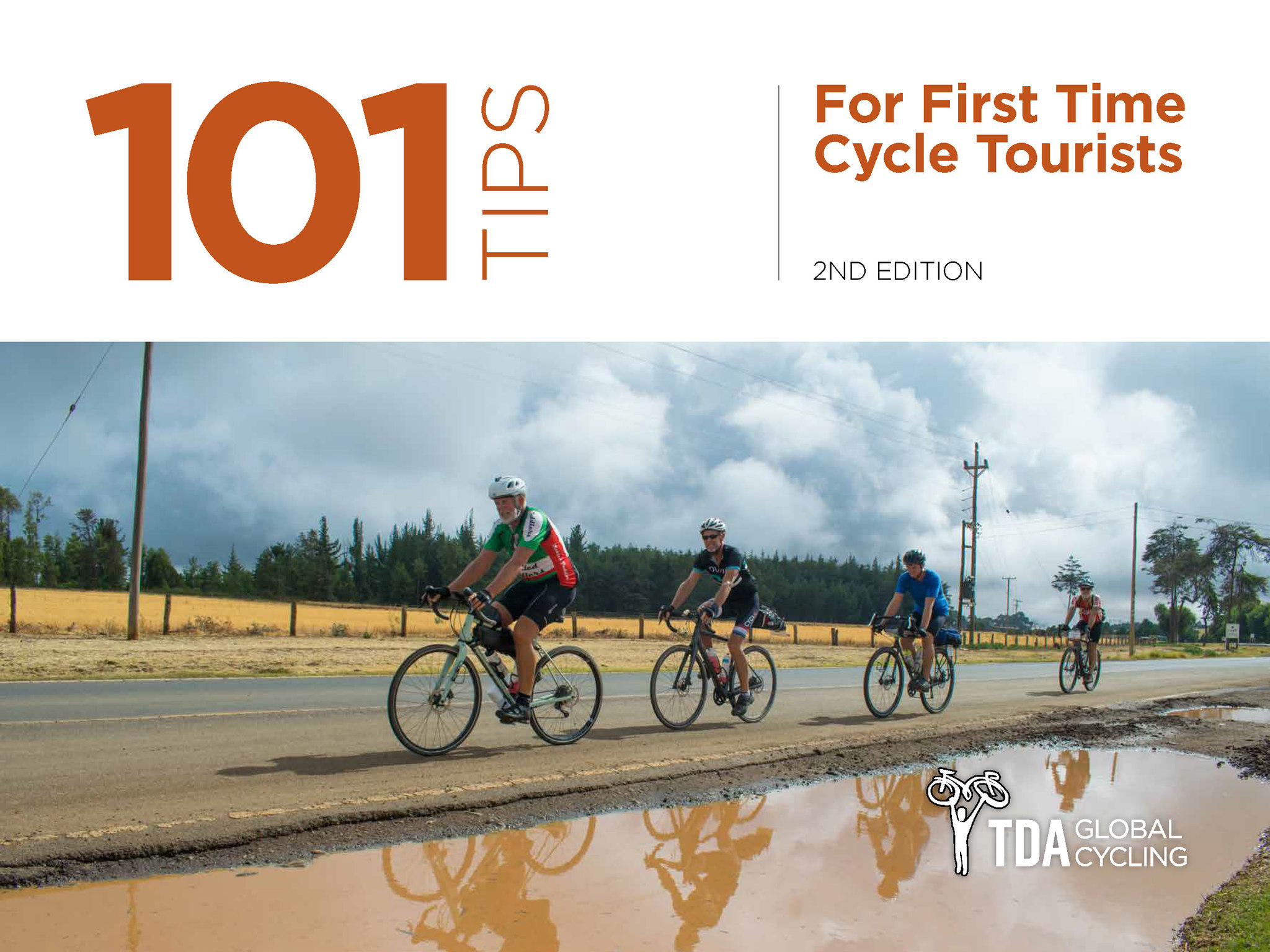
Leave a Comment for "Nine Days Of Namibian Dirt"